Throwback Thursday: The closest invisible lights
How we’re still, only now, just discovering the closest stars to Earth.
“As a boy I believed I could make myself invisible. I’m not sure that I ever could, but I certainly had the ability to pass unnoticed.” –Terence Stamp
When we look up at the night sky from a dark location here on Earth, if the Moon isn’t out, somewhere around 6,000 stars (or possibly even more) will greet your eyes on a clear night.

This is just a tiny fraction of the hundreds of billions of stars that actually make up our galaxy, which makes sense, if you think about it. Considering how large our galaxy is and how vast the distances between the stars is, it makes sense that only a small, select few of these would be visible from our location. And while this is true, you’d probably think that the stars we can see are pretty representative of the closest stars to us. But the story is actually much richer than that.
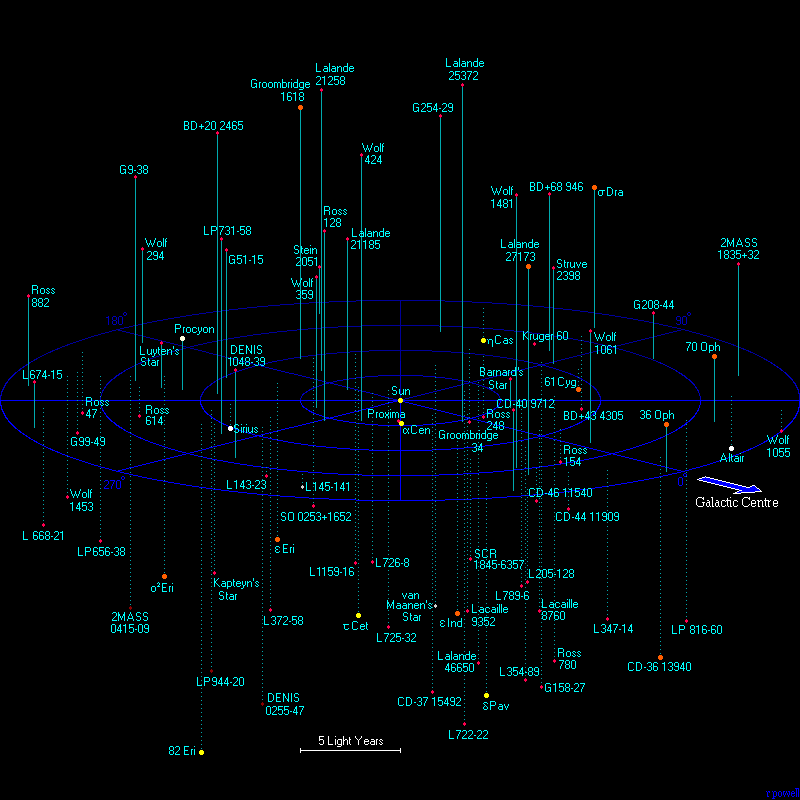
It won’t surprise you that all stars aren’t created equal, but it might surprise you just how unequal these stars are when compared to one another.
If you took a star like the Sun and moved it ten times as far away, it would appear just one-hundredth as bright. But if you took a star that was the mass of the Sun and compared it with a star that was ten times as massive as the Sun, the more massive one would be about five thousand times brighter! The most massive stars — more than 100 times as massive as our own — can outshine the Sun by literally millions of times.
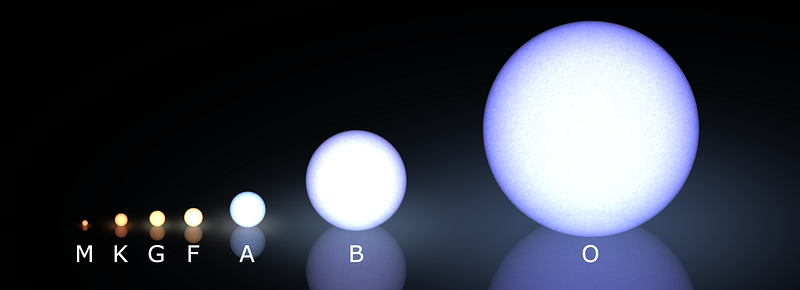
In other words, the stars you see are a combination of stars that are relatively close to us, but moreso stars that are very bright intrinsically. In fact, of the ten nearest star systems to us, only two of them are visible to the naked eye!
Take the closest star to us, for example: Proxima Centauri. You’ve probably heard of the Alpha Centauri system, a binary pair of stars just 4.3 light years away. But even closer lies Proxima Centauri, a red dwarf star that’s just 12% the mass of the Sun, and only 0.0056% as luminous in visible light. The photo below shows Alpha and Beta Centauri, the 3rd and 9th brightest star systems in the sky, along with Proxima Centauri, circled and pointed out.
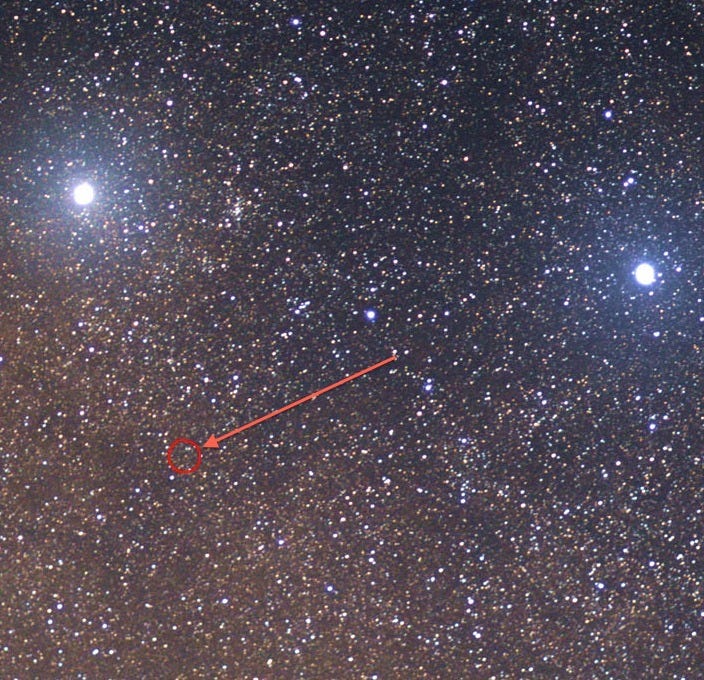
That’s the closest star to us, and it wasn’t even discovered until 1915, less than 100 years ago. And, as a hydrogen-fusing, main sequence star, it’s not even close to, intrinsically, the dimmest object out there.
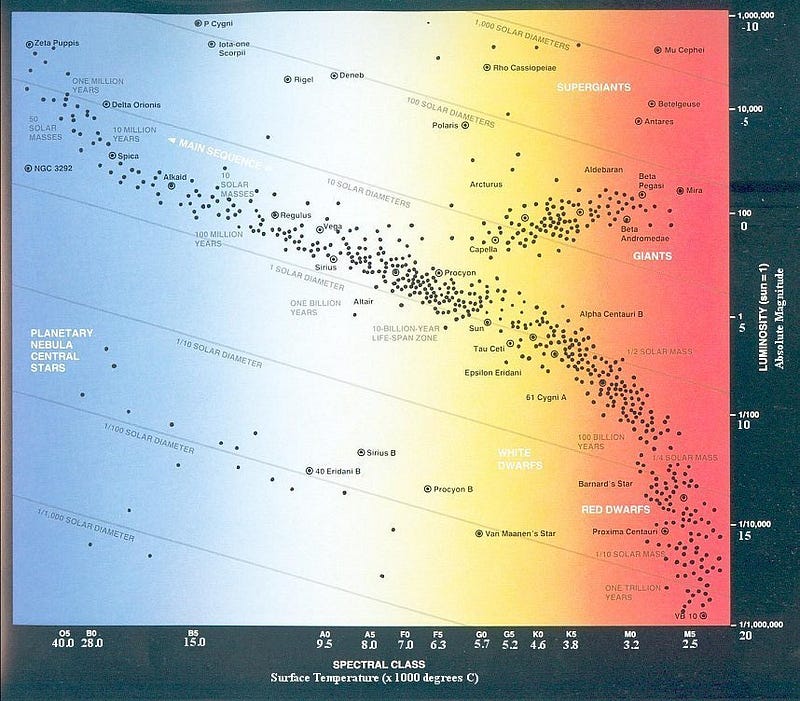
This is the “standard” Hertzsprung-Russell diagram, showing a huge variety of stars, ranging from the low-mass, cool, M-class red dwarfs (you can find Proxima Centauri among them) all the way up to the ultra-massive, bright blue O-class stars.
But this diagram cuts off stars that are even lower in mass: too low, in fact, to fuse Hydrogen into Helium. Instead, they generate their light by fusing the trace amounts of deuterium they were born with into somewhat heavier elements, with some of them literally trillions of times less luminous than the Sun, and millions of times less luminous than even the dimmest white dwarfs.

Known as brown dwarfs (even though, in terms of color, they’d be faintly magenta to the naked eye), these things can be so cool that they give off practically no visible light, and need to be hunted for in the infrared. The critical temperature for an object to be hot enough to spontaneously emit visible light is somewhere between 700 and 800 K, which means that if a brown dwarf is cooler than that, it will be invisible to human eyes no matter how powerful a telescope is used.
Even today, only a few thousand (confirmed) brown dwarfs are known, with the coolest one, WISE 1828+2650, having a temperature so low that — at standard atmospheric pressure — it couldn’t even boil water!
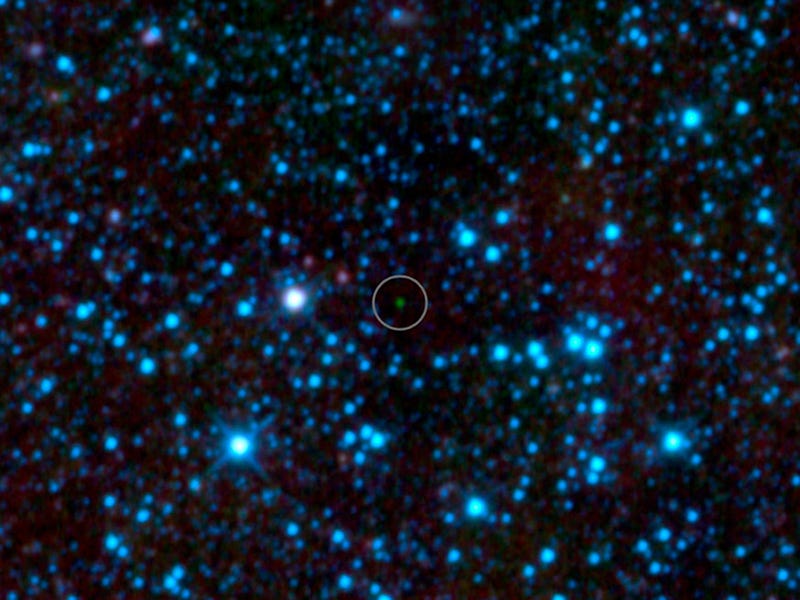
WISE — the Wide-field Infrared Survey Explorer — is the most powerful tool we’ve ever successfully developed and deployed for finding these objects. Shown below is Ned Wright’s graph of a standard Brown Dwarf spectrum, as well as the sensitivities of various space-based missions. As you can clearly see, until the James Webb Space Telescope comes along — which will be in 2018 at the earliest — WISE will have to serve as the best instrument we have for finding these elusive objects.

And WISE has just really outdone itself on this front, with its crowning achievement being that it’s found a pair of brown dwarfs just 6.5 light years away, making this the third-closest star system (if you count brown dwarfs as stars) to our Sun!
That’s right — once more, for emphasis — we’ve only just now, in 2013, found the third-closest star system to us. Only the Alpha Centauri system (including Proxima) and Barnard’s star are closer.

The pair — known as WISE 1049–5319 — was first observed by WISE back in 2010, but was difficult to confirm since it was located so close to the plane of our galaxy. Because of how dense stars are in the galactic plane (where we are, too, incidentally), it’s very difficult to detect faint sources against the background of stars; it took three years of analysis to confirm this system’s existence. So this might lead you to ask the following:
If we can have a pair of brown dwarfs just 6.5 light years away, how many of them could possibly be out there in our galaxy?
In other words, we’re sure that there are invisible lights right here in our own backyard. But how many of them could there possibly be?

The best constraint we have comes from gravitational microlensing. That is, we don’t directly observe-and-count the number of brown dwarfs to measure their density. I mean, we do, but even if we did a comprehensive survey that way, we’d be certain that we’ll miss plenty of them. The observe-and-count method gives us a lower limit on how many there could possibly be, but not an upper limit, and not a good estimate overall.
To get an upper limit, we observe a distant patch of sky, and each time a brown dwarf (or other invisible object) passes between us and the light source, it causes a characteristic brightening-and-unbrightening of the background light source we’re observing.

These objects are generically known as MACHOs, or MAssive Compact Halos Objects. And they exist! But they exist in very small numbers, at least as a percentage-of-total-mass of our galaxy.
This was once a legitimate candidate for dark matter, but thanks to multiple, independent groups of MACHO-hunters, we know for certain that there aren’t enough of them to account for the missing mass of the Universe.
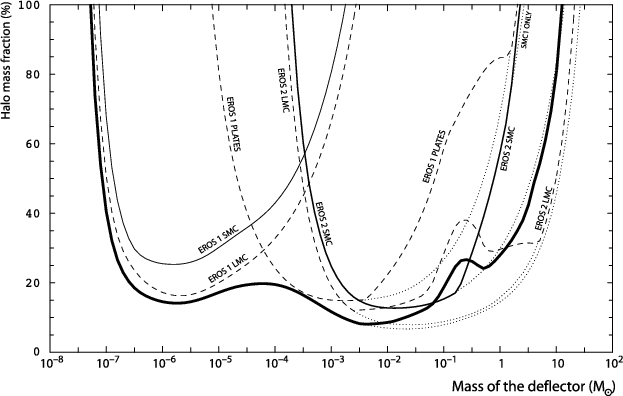
What this microlensing work has done is rule out that dark matter could be explained by MACHOs with masses between 0.00000001 Solar Masses (about the mass of the Moon) to 100 Solar Masses. Effectively, this rules out black holes of these mass ranges as well as the source of our dark matter.
Now this doesn’t mean that brown dwarfs couldn’t be a substantial fraction of the baryons (i.e., protons, neutrons and electrons) in our galaxy; there could be — in theory — as much mass locked up in these brown dwarfs as there are in all other known stars, combined, or there could be just a few per thousand cubic light-years. The range of what’s possible is literally that uncertain.

The future James Webb Space Telescope should be the technological leap that allows us to measure just how many brown dwarfs are actually present here in our local neighborhood. Once it eyes a patch of galactic sky and searches for these faint, infrared objects, we’ll finally know exactly what our local Universe looks like!
But isn’t that amazing? More than 400 years after the invention of the telescope, we still don’t know how many (and what types) of stars there are just in our own backyard in space. There are unseen lights in our own backyard, and cooler, lower mass brown dwarfs than these could, in principle, be even closer than even Proxima Centauri! (Although not as close as the once-hypothesized Nemesis; WISE has taken care of that!)
We’re still coming to terms with the Universe around us, on both the largest scales and also the smallest. Keep your eyes on the skies, and remember, there’s a whole Universe out there, and even with perfect skies, most of it is invisible to us!
Leave your comments at the Starts With A Bang forum over at Scienceblogs!





